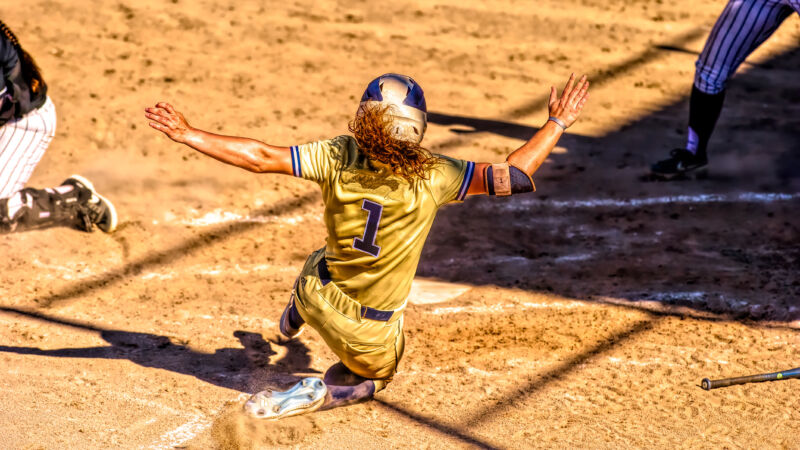A legal expert in multiple practice areas that includes wage and hour litigation recently talked with Checkpoint Payroll Update regarding the legal battles and pending federal legislation surrounding student-athletes and whether they may be classified as employees under the Fair Labor Standards Act (FLSA) in the future.
Economic reality test
The U.S. Department of Labor (DOL) looks at the “economic realities” of the working relationship between the employer and employee when determining a worker’s status under the FLSA, explains Andrew Henson, an associate with the national law firm Troutman Pepper. “Federal courts have crafted different multi-factor tests to determine whether the economic realities of a given relationship are consistent with employment status,” Henson began. “However, there is currently no consensus about which test should be used.”
New rule from DOL coming
For more than seven decades, the DOL and courts have applied an “economic realities” test to determine if a worker is an employee or independent contractor under the FLSA. The DOL noted this in its October 13, 2022 notice of proposed rulemaking (NPRM) to revise its analysis for worker classification from a current streamlined test focusing on two main economic realities to something more closely representing the broader range of factors historically used by the DOL and courts. The rule was to be issued in May 2023 but the DOL announced the final rule will be delayed until October 2023.
Tests by federal courts
Henson says that the tests developed by federal courts regarding worker classification under the FLSA typically focus on analyzing if an employer-employee relationship exists by determining whether the worker is economically dependent on the employer for work (employee) or is in business for themselves (independent contractor).
Several factors to consider
Generally, the following factors are considered when making a worker classification determination: (1) the degree of the employer’s right to control the manner in which the work is to be performed; (2) the worker’s opportunity for profit or loss depending upon their managerial skill; (3) the worker’s investment in equipment or materials required for their task, or their employment of helpers; (4) whether the service rendered requires a special skill; (5) the degree of permanence of the working relationship; and (6) the extent to which the service rendered is an integral part of the alleged employer’s business.
Testing for non-commercial purposes
However, Henson points out that “it has been less common for litigation to raise a question of whether an employment relationship exists where an individual is engaged in an ostensibly recreational, educational, or other non-commercial purpose.” He adds that “the courts have struggled to fashion the correct test in that instance.”
DOL’s position on student-athletes
Regarding the DOL’s current position on how student-athletes are to be classified under the FLSA, Henson says that “there is no explicit carveout for student-athletes” but notes that the DOL published a field operations manual “in which it opined that students are generally not deemed employees under the FLSA when they engage in ‘extracurricular activities’ and ‘interscholastic athletics.'”
Section b24 of Chapter 10 in the DOL’s Field Operations Handbook confirms university or college students who participate in activities generally recognized as extracurricular are generally not considered to be employees within the meaning of the FLSA. It adds that an employment relationship will generally exist regarding students whose duties are not part of an overall educational program and who receive some compensation.
Also, Section 10b03(e) says that activities of students in programs, including interscholastic athletics, conducted primarily for the benefit of the participants as a part of the educational opportunities provided to the students by the school or institution, do not result in an employer-employee relationship between the student and the school or institution for FLSA purposes.
Courts have ruled on student-athletes before
On the legal end, Henson explains that “it has been well-settled law, until recently, that student-athletes were not employees of their schools merely by engaging in college athletics.” In Nat’l Collegiate Athletic Ass’n v. Bd. of Regents of Univ. of Okla. , 468 U.S. 85, 120 (1984), Henson points out that the highest court in the nation observed that there existed “a revered tradition of amateurism in college sports.”
In 2016, the Seventh Circuit Court of Appeals rejected an FLSA claim brought by former track and field student-athletes and cited the Supreme Court’s 1984 ruling that the tradition of amateurism defined the economic reality of the relationship between student-athletes and their schools (Berger v. NCAA, 843 F.3d 285 (7th Cir. 2016)). Henson explains that “from the Berger court’s perspective, student-athletic ‘play’ is not ‘work,’ at least as the term is used in the FLSA.”
The Ninth Circuit Court of Appeals also ruled against the claim that student-athletes were employees of the National Collegiate Athletics Association (NCAA) under the FLSA in 2019, but instead of focusing on the Seventh Circuit’s rationale in Berger, the Court looked at whether the NCAA had the authority to hire and fire, supervise, and compensate student-athletes (Dawson v. NCAA, 932 F.3d 905, 907 (9th Cir. 2019)).
Pivotal ruling
Despite several prior legal rulings against claims that student-athletes should be treated as employees, the tide began to turn in 2021 with an antitrust case where student-athletes successfully challenged the NCAA’s rules limiting education-related benefits that participating schools were allowed to provide (NCAA v. Alston, S. Ct., Dkt. No. 20-512, 06/21/2021 ). “Prior to Alston, there was a general consensus that student-athletes were not employees as far as the FLSA was concerned,” Henson said.
He further explains that the Supreme Court’s unanimous decision siding with the student-athletes in Alston “signaled how the Court would likely rule if the question of student-athletes employment status had been before it.” Key language that Henson points to from the Court’s ruling involves referring to student-athletics as a “profitable enterprise” and that the NCAA was “depressing wages” of “student-athlete labor.”
Henson also spoke to the Court’s casting off the “so-called ‘tradition of amateurism’ that it had previously recognized as merely a ‘passing comment'” and added it “made clear its view that the economic realities of at least some portion of student-athletics are that of a labor market.” He notes that the Court “left little reason to doubt that it would conclude student-athletes could be employees under the FLSA.”
Current challenge a potential game-changer
According to Henson, the Alston ruling “paved the way for the latest FLSA challenge” where several “student-athletes brought suit against 25 NCAA Division 1 member schools and the NCAA itself.” Currently, the case is pending an appeal in the Third Circuit after the Eastern District of Pennsylvania concluded that the student-athletes plausibly alleged they are employees of the schools for purposes of the FLSA (Johnson v. NCAA, 556 F.Supp.3d 491 (E.D. Pa. 2021)).”[The case] may be the vehicle by which this question is finally answered by the Supreme Court,” Henson stated.
Legislation on student-athletes
On the legislative side of the fence, a number of new federal name, image, and likeness (NIL) bills have recently been introduced in Congress that touch on the student-athletes as employees subject. On July 26, 2023, the College Athlete Economic Freedom Act was reintroduced by Senator Chris Murphy (D-CA) and Representative Lori Traham (D-MA) with a provision that would allow international college athletes to market their NIL in the same ways their non-immigrant peers can without losing their F-1 (Academic Student) visa status, including in the case that athletes become employees of their schools and/or athletic associations.
Some bills seek to clarify student-athletes are not employees
Other legislation intends to codify that student-athletes are not employees. Back in May 2023, Representatives Mike Carey (R-OH) and Greg Landsman (D-OH) reintroduced the Student-Athlete Level Playing Field Act that would prohibit universities from restricting student-athletes from entering into NIL deals and ensure student-athletes would not be considered employees of universities.
Also, Senator Ted Cruz (R-TX) announced draft legislation on August 3, 2023, that says a student-athlete would not be considered an employee of an institution, conference, or interstate intercollegiate athletic association for purposes of any federal or state law based on the student-athlete’s participation in, or status as a member of, any varsity sports team.
Enacted legislation could stop possible success in the courts
Henson said that Cruz’s proposal “would remove the specter of student-athletes being deemed employees of their institutions under federal law and would also preempt any state law to the contrary.” He added that from the NCAA’s perspective, it would provide legal clarity, and if such a bill was passed, Henson does “not see a high likelihood of success in a hypothetical legal challenge.”
Henson believes more federal legislative action on this topic should be expected and that a resolution to the question may come from an act of Congress in one form or another.
FLSA compliance required if ruling favors student-athletes
However, if the Supreme Court rules on the classification of student-athletes as employees before any pending legislation on the matter has been signed into law, Henson says “that would necessarily require the schools to comply with the FLSA, including by paying overtime and minimum wage.” He noted that DOL “guidance for employers of student-athlete-employees is unlikely to be different than it is for other employees.”
Other issues to consider
He additionally explains that “there can be no doubt that payroll costs will increase substantially if student-athletes are deemed employees of their educational institutions,” which may include cutting sports programs or perhaps reducing the roster of existing sports.
Stay up to date with changing regulations in the tax and accounting industry with Thomson Reuters accounting solutions.













